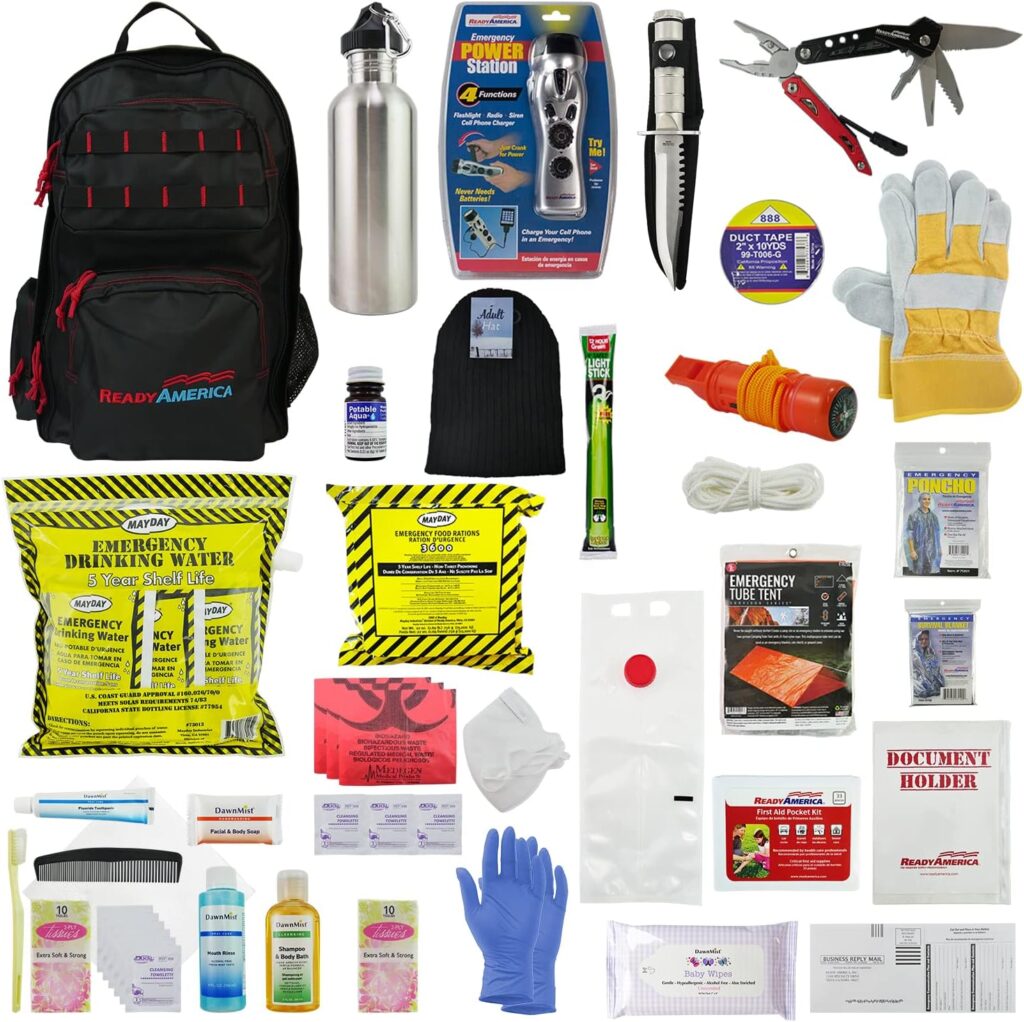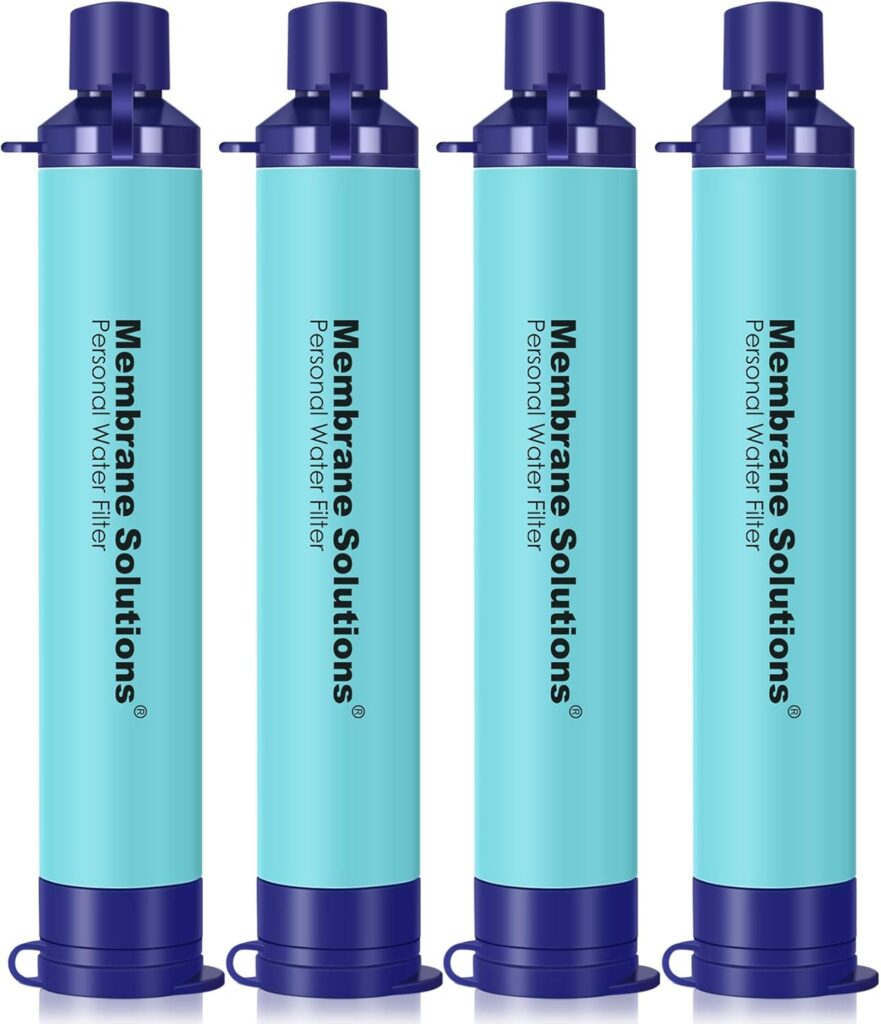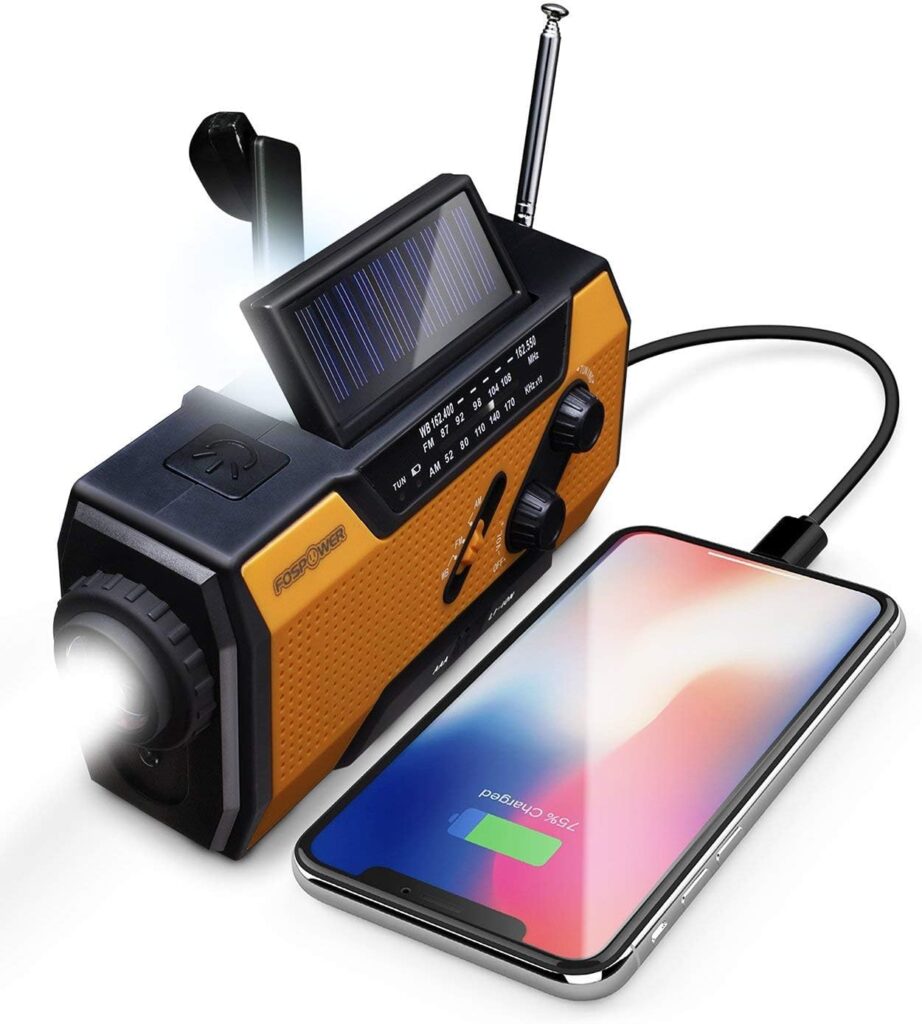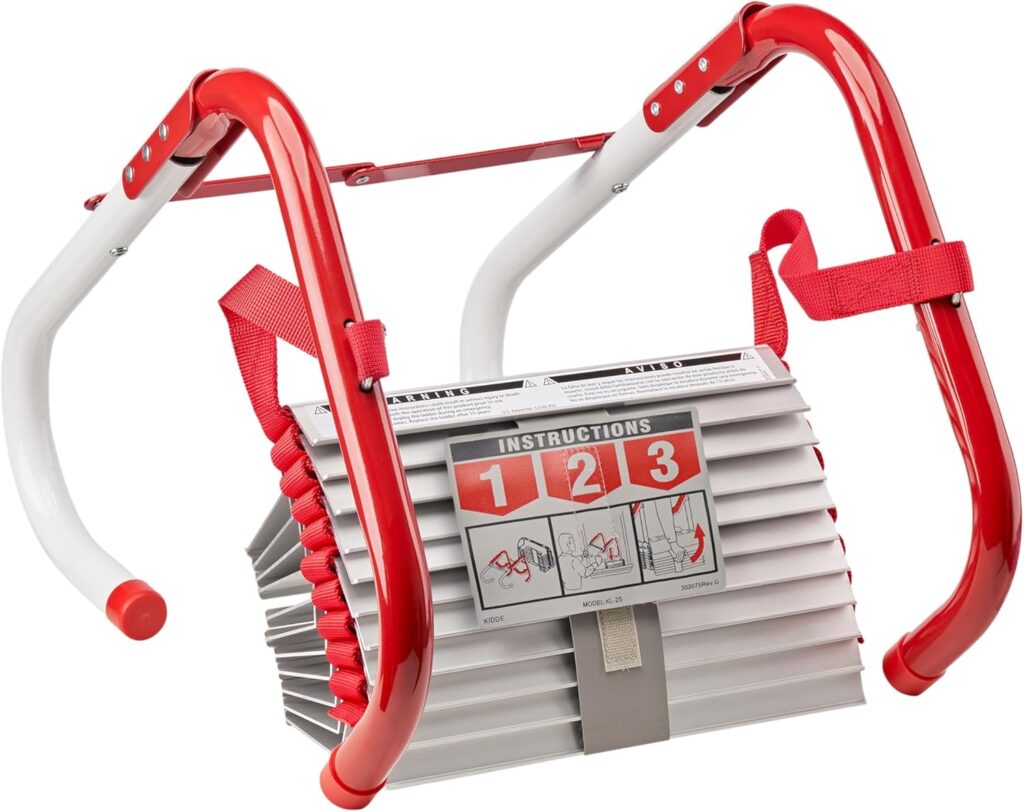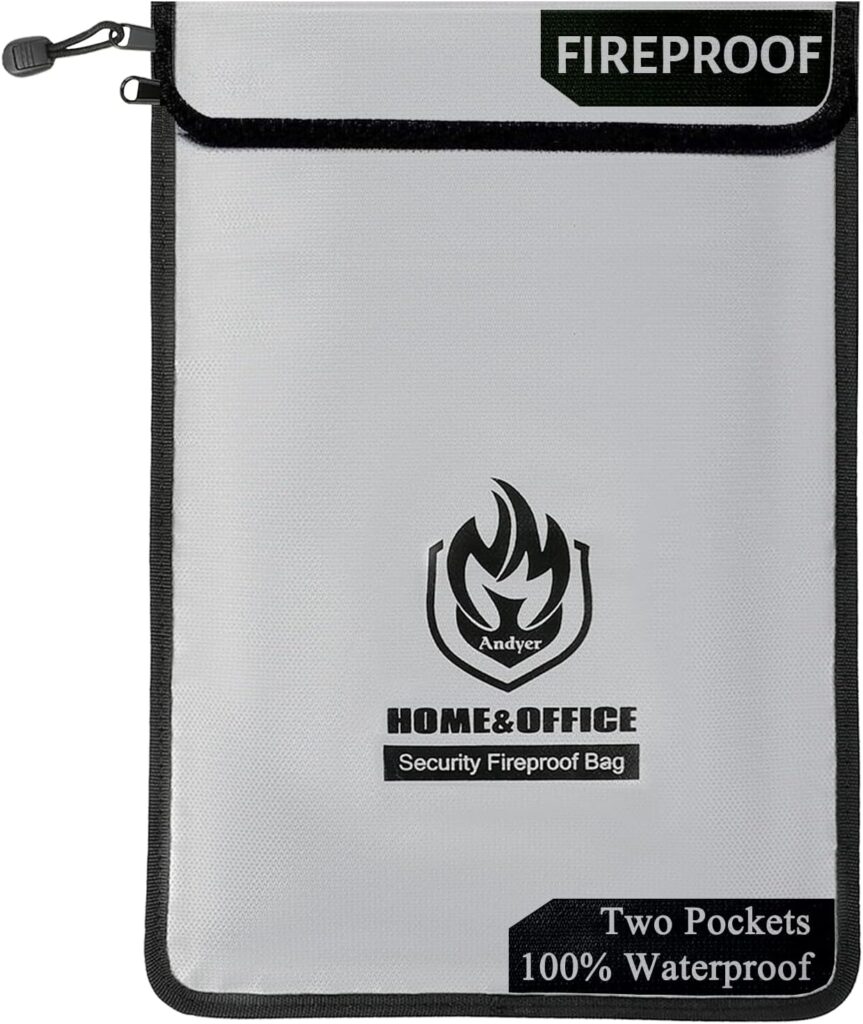Understanding Emergency Preparedness
When disaster hits, it doesn’t wait for an invitation—it just barges right in, often without warning. That’s why having an Emergency Preparedness Plan for Every Household is more than just a good idea—it’s a necessity. Whether it’s a natural disaster, a power outage, or a sudden crisis that disrupts daily life, being prepared means you’re not left scrambling for basic needs. With a solid plan in place—covering essentials like food, water, medical supplies, and communication—your household can respond calmly and confidently. It’s not about living in fear; it’s about being ready, staying safe, and protecting the people who matter most when the unexpected happens.
Importance of Emergency Plans
Having a plan in your back pocket is key when things go sideways. Quick moves in the first few minutes can save lives and stop a lot of headaches down the line. A solid plan guides everyone, from workers to visitors, helping them keep calm and carry on in the midst of panic (Ready.gov). When you’re prepared, bouncing back from disasters doesn’t seem impossible.
Crafting an emergency plan means scoping out the risks in your world, whether it’s at home or at the office. This ‘thinking-ahead’ attitude means you’ve got specific steps ready to keep everyone safe.
Developing an Emergency Response Plan
Building a top-notch response plan starts with spotting trouble before it starts. This means knowing what could go wrong and what success looks like. You’ll want plans that highlight how to protect everyone against particular dangers (Ready.gov).
Here’s your 10-Step Guide to whipping up an emergency response plan that can stand up to just about anything:
| Step | Description |
|---|---|
| 1 | Gather a Team of Planners: Get a mix of people on board to cook up the plan. |
| 2 | Scope Out Risks: Look at what might go wrong specifically in your spot. |
| 3 | Set Goals: Know what you want to achieve if things go south. |
| 4 | Map Out Actions: List what folks should do if the worst happens. |
| 5 | Spread the Word: Make sure everyone knows about the plan and what it means for them. |
| 6 | Get Practicing: Run drills regularly so folks know their part. |
| 7 | Put It to Use: Roll out the plan when needed, no hesitation. |
| 8 | Keep It Fresh: Check and tweak the plan so it stays relevant. |
| 9 | Document Everything: Record the planning process and any changes. |
| 10 | Team Up with Local Heroes: Work alongside local emergency folks for extra help and backup. |
By sticking to these steps, you’re making sure your plan is both flexible and specific, so it’s ready to handle all kinds of curveballs while providing crystal-clear safety directions. Regular drills and practices uncover any sneaky holes in the plan and beef up your response. For handy resources on putting together a foolproof plan, don’t miss our emergency preparedness checklist and emergency kit checklist.
Key Elements of an Emergency Plan
Creating a solid emergency plan means knowing what you gotta do to stay safe when life throws a curveball. Let’s cut straight to the essentials – it boils down to gauging risks, figuring out how to dodge potential traps, and having a strategy ready when calamity strikes.
Risk Assessment and Objectives
Getting started on an emergency plan? It all kicks off with a good ol’ risk check-up. What could potentially mess with your home sweet home? Is it nature acting all wild with floods and hurricanes, or is it man-made chaos like fires or chemical spills? Knowing what’s possible helps craft goals geared around staying safe and keeping your wits about ya (Ready.gov).
Mapping out what actions to take when something goes awry is just as crucial as identifying the hazards. With some crystal-clear objectives in your back pocket, you stay focused on staying safe when the going gets tough.
| Risk Type | Potential Hazards | Objectives |
|---|---|---|
| Natural Disasters | Floods, earthquakes, hurricanes | Evacuation routes, communication plan |
| Health Emergencies | Pandemic outbreaks, food safety issues | Health resources, vaccination plans |
| Man-Made Threats | Fires, chemical spills | Emergency contacts, mitigation measures |
Protective Measures for Hazards
Once you’ve scoped the risks, it’s time to cook up some safety measures. This means having plans that folks can follow when things get dicey and knowing what supplies you need to ride out any sticky situation.
Safety gear and procedures should fit like a glove with your home’s setup. Think about running mock drills for natural disasters or keeping a stash of medical supplies for health scares. A handy emergency supplies checklist helps keep track of what’s needed for the bumps in the road. You can grab a ready-made 72-hour emergency kit on Amazon to get a head start on being prepared.
10 Steps for Effective Planning
Let’s break it down into bite-sized pieces with these ten steps to nail down a bullet-proof emergency plan:
- Identify Potential Risks: Look into what might pose a threat around your block. When planning for natural disasters, make sure clean drinking water is covered with a portable water filter straw.
- Set Objectives: Define what safety looks like for you and your tribe when trouble brews.
- Develop Procedures: Spell out what needs doing and make sure everyone gets the memo.
- Assign Responsibilities: Hand out roles to keep things running smoothly and chatter clear.
- Gather Resources: Collect essentials with this emergency kit checklist.
- Create Communication Plans: Set up ways to stay in touch and in the know when disasters loom.
- Practice Drills: Keep it fresh in everyone’s mind with a regular round of emergency practice.
- Review and Update Plan: Swing by the plan now and then to make sure it’s still on point.
- Educate Family Members: Share the lowdown and skills for tackling emergencies head-on.
- Integrate Other Plans: Weave this plan in with other survival playbooks like a disaster readiness plan for a smooth and unified approach.
By following these steps, you’re not just crossing your fingers and hoping for the best – you’re building a strong backbone of readiness and safety that’ll help your crew stay cool in the chaos.
Compliance and Regulations
Staying ready for emergencies isn’t just about peace of mind; it’s a must-do for places dealing with dangerous stuff. Get the lowdown on what boxes need ticking when it comes to rules and regs for emergency situations. This bit zooms in on what the EPA has laid out for facilities and what folks running the show at stationary sources gotta keep an eye on.
EPA Regulations for Emergency Programs
The Environmental Protection Agency (EPA) has laid down the law for spots managing hazardous materials to have their emergency response game strong. If you’re on the list, the EPA guidebook says you’re on the hook to whip up a top-notch response plan.
Here’s what needs throwing into that mix:
| Essentials of an Emergency Response Plan |
|---|
| A crackerjack plan for emergencies |
| Stocked and ready-to-roll emergency gear |
| Training that puts employees on ready mode |
| Regular updates to keep the plan in tip-top shape |
These rules are to make sure everyone can handle the sticky situations that hazardous substance spills can create.
Obligations for Stationary Source Operators
Got a place under the banner of Program 2 or Program 3 processes? Then, heads up! There are must-dos for those running stationary sources when it comes to the emergency response scene. You have the gig of making sure your crew is sharp and ready if something goes pear-shaped with RMP-subjected chemicals (EPA).
Here’s the rundown of must-haves:
- Crafting an Emergency Response Plan: Tailor-make a plan just for your spot and situations.
- Getting the Response Gear Up-to-Snuff: Make sure emergency teams have all the gear they could ever need.
- Employee Training That Sticks: Everyone should know their emergency roles without having to think twice.
- Keeping Plans Fresh: Update the response playbook regularly so it’s never out of step with current regs or happenings.
If you’re sorting through your own emergency stash, check out our emergency supplies checklist. It lays out the must-haves for when the unexpected pops up and helps dovetail personal plans with the bigger-picture rules.
Getting Ready for the Unexpected
Prepare for emergencies with a mix of good planning, teaching everyone in the house about emergency tools, and using tech to stay connected. These steps can help any home be more prepared for whatever comes their way.
Imagine Emergencies and Get Ready
To get ready for emergencies, think through different situations that could occur, even the odd ones. By going through these scenarios, families can learn how to handle a crisis better. Be it storms, fires, or sudden health issues, it’s essential to cover all the bases so everyone’s ready when danger looms.
| Type of Trouble | How to Get Ready |
|---|---|
| Bad Weather | Know your escape routes, stock up on necessary supplies, and keep an eye on the forecast. |
| House Trouble (like fire) | Make a fire exit strategy, practice drills, and get comfy using a fire extinguisher. |
| Health Issues | Locate nearby hospitals, keep a first aid kit handy, and have emergency numbers close by. |
Know Your Emergency Gear
Making sure everyone at home knows about alarms and what they mean is a big deal. Those who set up these systems should show everyone in the house how to use them without hassle. Understanding alarms, where to go, and how to stay calm can make a big difference. A weather alert radio like this hand-crank NOAA emergency radio helps you stay informed even during power outages.
Getting everyone used to these tools means having regular practice sessions. A few hands-on activities, like how to climb out a window safely, can help everyone remember what to do when things go south.
Practice with real tools like this emergency fire escape ladder so everyone knows how to use it quickly and safely.
Tech to the Rescue for Talking
Nowadays, tech helps keep everyone on the same page in an emergency. Use apps, online learning, and digital tools to spread the word about your emergency plan. Just like having a fire ladder or knowing the quickest way out of the house, being digitally prepared is key.
Family communication plans are a must. Having smartphone apps to alert everyone and keeping emergency contacts up to date makes sure nobody loses touch when it’s urgent.
By following these steps, families can create a safer home. To make sure nothing’s missed, check out our emergency preparedness checklist and emergency supplies checklist to cover all the essentials.
Coordination and Communication
Having a plan to deal with emergencies in buildings with multiple tenants is a big deal. You’ve got different folks all sharing space, and if anything unexpected happens, being on the same page is super crucial. When everyone knows what to do and how to communicate, things can run a lot smoother.
Working Together in Shared Spaces
Imagine trying to act during an emergency without knowing what your neighbor is doing—it’d be chaos. That’s why it’s so important for people in the same building to sort things out ahead of time. Get everyone together and hammer out a plan that acknowledges everyone’s needs and resources. Regular chats can make sure everyone’s got their job sorted out and knows where they stand.
| Aspect | Importance |
|---|---|
| Shared Emergency Response Plan | Cuts down confusion |
| Regular Coordination Meetings | Boosts communication |
| Joint Training Exercises | Makes everyone more ready |
According to Allied Universal, getting your act together can save lives and keep your stuff safe when things go south.
Keeping Everyone in the Loop
It’s not enough to just have a plan—everyone has to be in the know before anything happens. That includes passing out written instructions about what to do, how to get out, and who to call. Keeping everyone in the loop with updates and training is key to them taking the right steps when it counts.
This kind of communication doesn’t just cover your bases—it also builds a sense of camaraderie and gets everyone on alert. Security folks can help be the bridge between building occupants and local emergency services. Clear communication set up way ahead of time can really streamline how things roll out when they need to.
| Communication Method | Advantages |
|---|---|
| Written Materials | Easy to hand out and check |
| Training Sessions | Real-world practice |
| Regular Updates | Keeps everyone in the know |
Teaming Up with Local Pros
Working with local emergency responders is a must. Knowing who to call and what everyone can do on the ground aligns your plans with the resources you actually have around. These partnerships can clue you in to local dangers, helping you beef up your game against potential threats.
Getting cozy with your local fire department or other emergency folks can make a world of difference. By practicing together and regularly touching base, you’re all going to know what’s in the other’s playbook. OSHA says that integrating plans with local services makes everything tougher and more effective when the chips are down.
| Collaborative Action | Benefits |
|---|---|
| Joint Training Drills | Gets everyone on the same wavelength |
| Regular Meetings | Offers updates and shares tools |
| Shared Resource Utilization | Makes for better preparation |
When it comes down to it, solid coordination and smooth communication are the backbone of any emergency preparedness plan. Make sure everyone in your building is synced up, fill in the occupants on what’s what before anything happens, and keep the lines open with local authorities. If you’re looking to get really prepared, check out our emergency supplies checklist and emergency kit checklist.
Review and Update of Emergency Plans
It’s smart to keep emergency plans fresh and ready for action. This bit here dives into why it’s a good call to keep those plans under the microscope, highlights what might spark a review, and looks at blending these plans with how to keep business rolling during tough times.
Importance of Regular Evaluations
Emergency plans can’t just gather dust in a drawer. It’s usually a good idea for folks in organizations to give their emergency plans a good look-see every year. These check-ups make sure everyone’s on the same page with what they should do when things get hairy, and that the plan’s keeping up with the law and industry guidelines without missing a beat.
| How Often | Why |
|---|---|
| Every Year | Ensure compliance and relevance |
| After an Incident or Drill | Fix anything that’s off-kilter |
| When Staff Change | Keep everyone in the loop with their duties |
Triggers for Plan Reviews
Certain happenings mean it’s time to pull that plan out again. Some of those are:
- New rules coming in hot from lawmakers
- New faces at the workplace or a big shuffle
- A drill or actual incident that shows the plan has holes
For businesses sharing a space, they should chat with each other and local emergency folks to keep the communication channels wide open.
| Event That Acts as a Wake-Up Call | What to Do Next |
|---|---|
| New Regulations | Check the plan’s still playing by the rules |
| New or Departing Staff | Update roles and contacts |
| Found Flaws in a Drill | Change things up so they make sense next time |
Integration with Business Continuity Plans
When a crisis hits, having your emergency plan and business operation strategies work hand-in-hand is a lifesaver. It ensures the business doesn’t hit a wall and considers all the risks and resources upfront. Having regular practice sessions with everyone, from the bosses down to the folks on the ground, makes tackling emergencies way smoother.
A proper plan should, without fail, cover:
- Appointing folks who know the drill for evacuations
- Keeping retraining and drills as a regular gig
- Always having the latest contact info for agencies and facilities
To wrap it up, giving your emergency plans regular TLC, having clear signs for when they need a tweak, and syncing them up with staying open for business can make all the difference when the unexpected happens. For more handy tips and checklists, see our emergency supplies checklist or disaster preparedness checklist.
Training and Preparedness by OSHA
Preparedness Training Information
If you need to gear up for emergencies, the Occupational Safety and Health Administration (OSHA) is your go-to. They’re all about making sure folks have the know-how on-hand for when things go south. They’ve got the lowdown on getting employers and workers ready, more like a safety instruction manual for the real world. When you’re clued in and trained up, it’s easier to dodge injuries and make emergency responses tighter OSHA.
Protection for Response Workers
Keeping response workers out of harm’s way during emergencies, that’s a big deal. OSHA breaks down the sort of sticky situations you might land in when the environment gets a bit hairy. Safety gear, or personal protective equipment (PPE), is like your shield and OSHA makes it clear workers need it. Having a plan that includes PPE usage and spotting danger ain’t just for show. Regular drills keep the emergency know-how fresh and builds confidence for when it’s go-time.
| What to Focus on for Worker Safety | What’s Involved |
|---|---|
| Spotting Hazards | Being savvy about risks in different emergencies. |
| Using Gear Right | Knowing how to put that safety equipment and PPE to good use. |
| Emergency Know-How | Being in the know about evacuation and protocols. |
| Mental Prep | Tackling stress and keeping a clear head during the chaos. |
Zeroing in on Hazards like Floods and Wildfires
When you’re dealing with stuff like floods and wildfires, you need a game plan. Floods, being a regular headache in the U.S., need extra attention. OSHA dishes out the critical details on handling wet and wild conditions, including why evacuation plans are non-negotiable OSHA. For wildfires, think safety zones and getting acquainted with fire behavior. Prepping before things get heated can keep everyone safe and minimize loss OSHA.
| Specific Hazards | What Training Covers |
|---|---|
| Floods | Routes, water dos and don’ts, knowing the risks. |
| Wildfires | How fire acts, keeping safe zones, escape routes. |
If you’re planning ahead to tackle disasters, giving a nod to OSHA’s tips in your emergency preparedness plan can make all the difference. It boosts safety and encourages a vibe of readiness wherever you are – whether in the office or out in the community. Need detailed help on putting a plan together? Check out our emergency supplies checklist and emergency kit checklist for more.
Evaluating Emergency Responses
Checking out how well folks handle emergencies ain’t just about patting backs or pointing fingers—it’s a ticket to better-prepared tomorrows. Figuring out what’s good, bad, or downright ugly in past responses paves the way for doing it better next time.
Post-Emergency Evaluation Steps
Let’s talk about what goes down after chaos strikes. Here’s a rundown of essential steps:
- Gathering Data: First move—scoop up all details about what went down, like who did what, when, and with what stuff.
- Community Feedback: Don’t sleep on what the locals say. They lived it; their take can clue you into how on-point the response really was (Rural Health Information Hub).
- Resource Assessment: Time to play a little ‘Did we have the right gear?’ game. Look at the tools used and decide if they hit the mark.
- Analysis: Put on your thinking cap. Review the gathered treasure trove of data to single out the home runs and the fumbles.
| Step | Description |
|---|---|
| 1. Gathering Data | Scoop up info on what went down during the crisis. |
| 2. Community Feedback | Get a earful from the folks who took the hit. |
| 3. Resource Assessment | Size up the tools and gear used. |
| 4. Analysis | Break it down to see what shone and what flopped. |
Importance of After Action Reports
On the flip side, an After Action Report (AAR) holds all the juice from the drama at play. This document spills the beans on decisions and pinpoints the next steps (Rural Health Information Hub). Here’s the breakdown of what typically goes into an AAR:
- Event Overview: Quick play-by-play of the main event.
- Analysis of Capabilities: Grades for how the crisis squad played their cards.
- Conclusions: Gems we’ve picked up from the whole saga.
- Improvement Plans: Wise words for the next rodeo.
| AAR Component | Description |
|---|---|
| Event Overview | The nutshell version of what went down. |
| Analysis of Capabilities | How the team measured up in action. |
| Conclusions | Nuggets of wisdom learned. |
| Improvement Plans | Suggestions to up the game for next time. |
Resources for Comprehensive Evaluation
Getting a good handle on what worked and what flopped takes some knack and resources. Bring allies on board—nonprofits, college whizz-kids, and emergency gurus can help with data digs and back up (Rural Health Information Hub). Here are a few handy tools:
- Data Collection Tools: Gadgets for snapping up words and numbers.
- Assessment Software: Smart programs that break down the details better than a detective.
- Report Production Resources: Templates and guides that make report writing a breeze.
Dive into extras like the emergency preparedness checklist, emergency supplies checklist, and emergency kit checklist for tips on setting up to face whatever tomorrow throws at you. These handy tools keep you prepped and primed.
Household Emergency Preparedness
Getting your home ready for an emergency might sound like a drag, but it’s really about making sure everyone’s on the same page when life throws a curveball.
Family Emergency Planning
Kicking off an emergency game plan means first having a chat about what might actually happen, depending on where you live. Think about things like storms, fires, or surprise hospital dashes. Make sure every member of the gang knows the drill and can jump into action if things get wild.
Things to keep in mind for your plan:
- Exit routes (no GPS required!)
- Places to regroup if you get split up
- Must-have survival goodies
Don’t forget to protect critical documents with a fireproof and waterproof document bag in your emergency kit.
Escaping when needed—especially if someone needs a little extra help—has gotta be part of the playbook. Catch more tips with our handy checklist.
Assigning Responsibilities
Everyone needs to know their game plan role. When you know your bit in an emergency, it’s easier to pull together as a team. Here’s how you can divvy up the jobs:
- Someone’s the gear guru, managing all the emergency stuff
- Appoint a chatterbox as the family contact person
- Decide who looks after the kiddos or gramps
Sort out these jobs beforehand and you’ll have a tighter ship when trouble comes knocking. Peek at more ideas in our checklist for emergency gear.
Creating Emergency Contact Information
An emergency contact card is your family’s secret weapon. Think of it as a cheat sheet, packed with need-to-know info like:
- Everyone’s name and digits
- Home base address
- Backup buddies or relatives’ numbers
- Any medical tidbits you can’t forget
Everyone should know where this card is—even if it means drilling it a few times (American Red Cross). Take a spin through our checklists for disaster-prep and emergency gear ready to keep everyone sharp.


